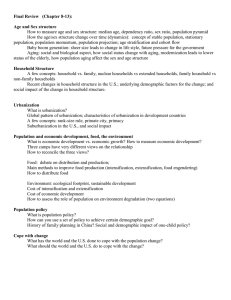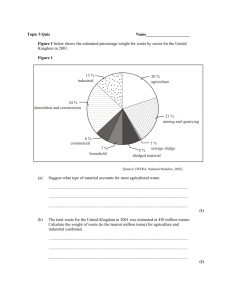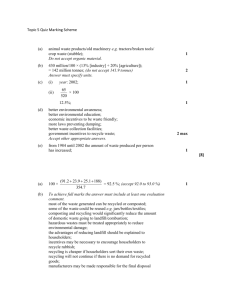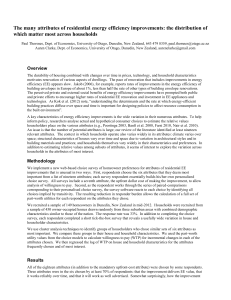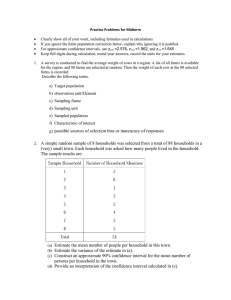Household Dynamics and Per Capita Environmental
advertisement
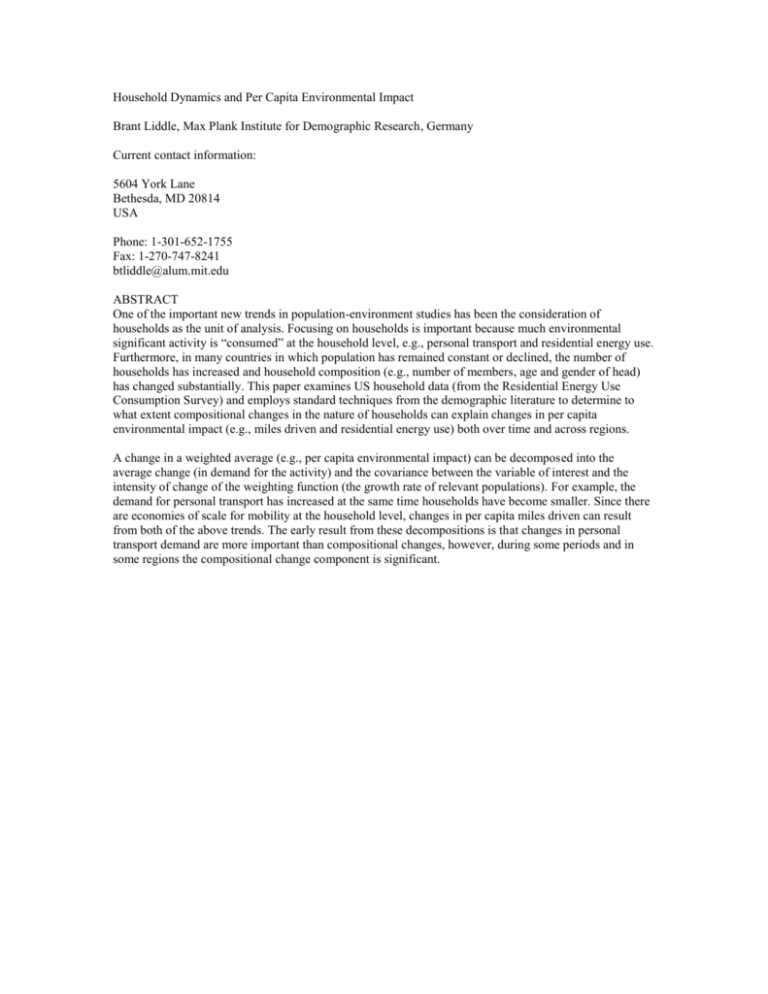
Household Dynamics and Per Capita Environmental Impact Brant Liddle, Max Plank Institute for Demographic Research, Germany Current contact information: 5604 York Lane Bethesda, MD 20814 USA Phone: 1-301-652-1755 Fax: 1-270-747-8241 btliddle@alum.mit.edu ABSTRACT One of the important new trends in population-environment studies has been the consideration of households as the unit of analysis. Focusing on households is important because much environmental significant activity is “consumed” at the household level, e.g., personal transport and residential energy use. Furthermore, in many countries in which population has remained constant or declined, the number of households has increased and household composition (e.g., number of members, age and gender of head) has changed substantially. This paper examines US household data (from the Residential Energy Use Consumption Survey) and employs standard techniques from the demographic literature to determine to what extent compositional changes in the nature of households can explain changes in per capita environmental impact (e.g., miles driven and residential energy use) both over time and across regions. A change in a weighted average (e.g., per capita environmental impact) can be decomposed into the average change (in demand for the activity) and the covariance between the variable of interest and the intensity of change of the weighting function (the growth rate of relevant populations). For example, the demand for personal transport has increased at the same time households have become smaller. Since there are economies of scale for mobility at the household level, changes in per capita miles driven can result from both of the above trends. The early result from these decompositions is that changes in personal transport demand are more important than compositional changes, however, during some periods and in some regions the compositional change component is significant.




